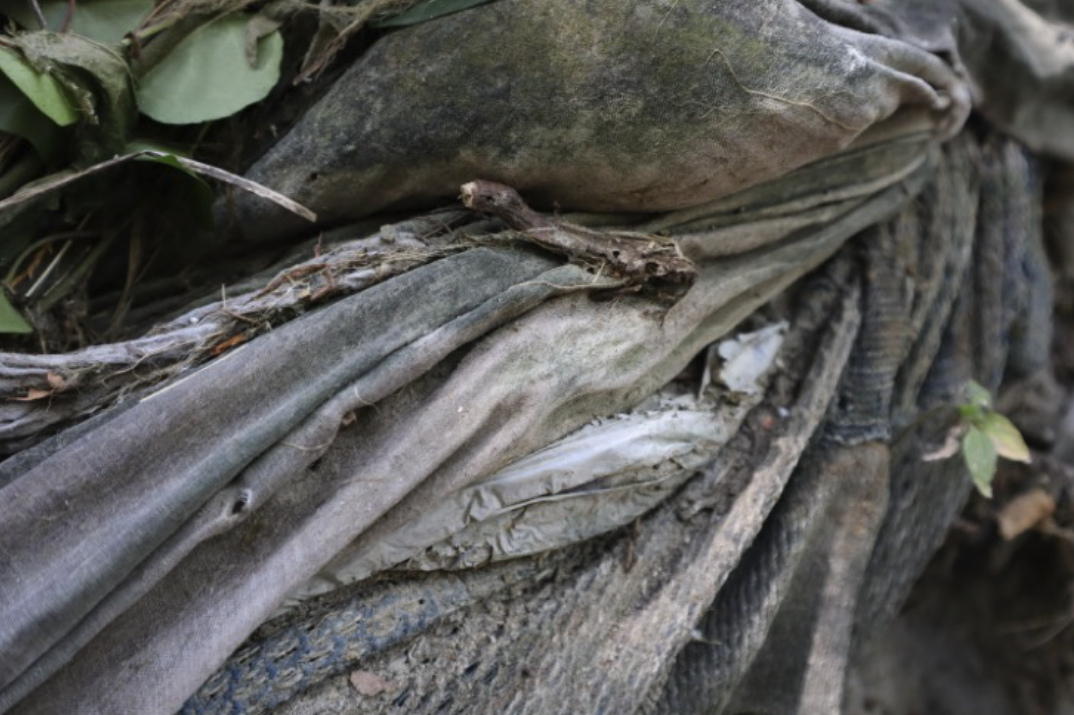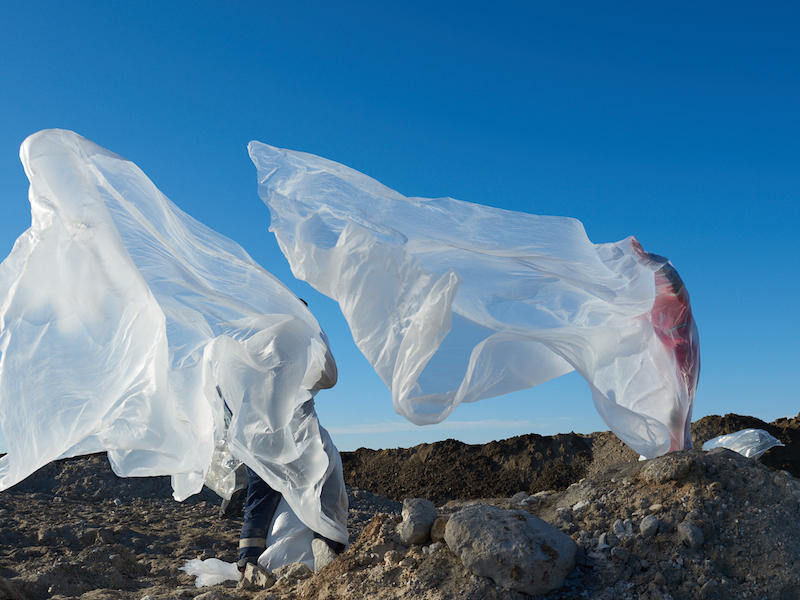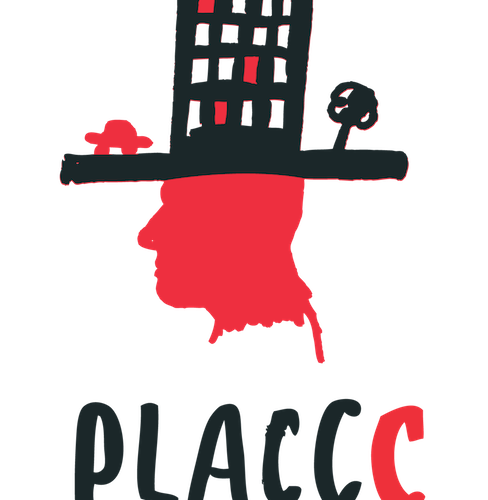 artists
artists
HEAVY KINSHIP - research residencies within the IN SITU network — Part 2
Second part of the series throughout IN SITU by Nana Francisca Schottländer
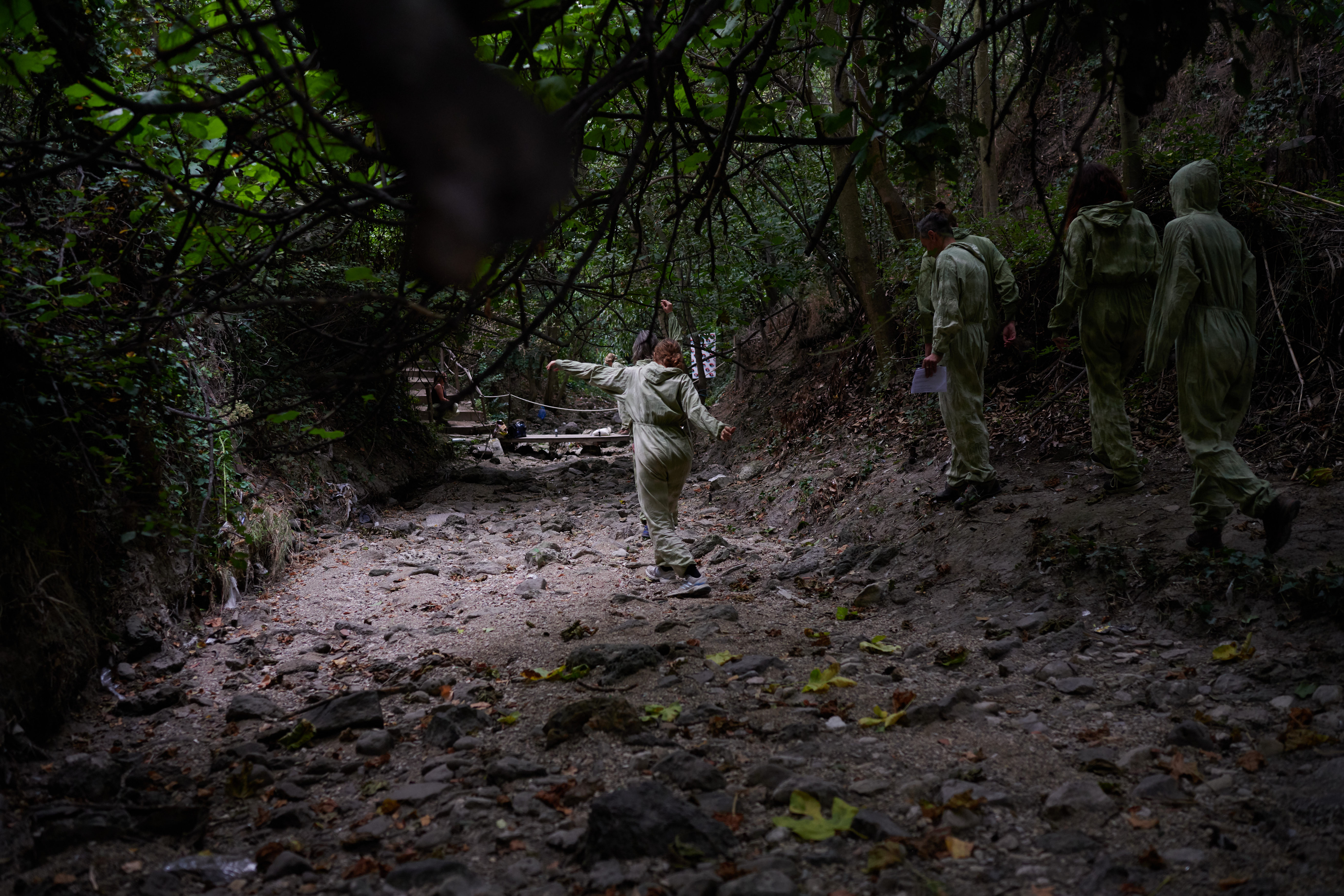
Nana-Francisca Schottländer is a Copenhagen-based inter-disciplinary artist working at the intersection between dance, performance, installation, and conceptual art. Her work revolves around encounters and intra-actions with other-than-human entities and phenomena such as rocks, fungi, water, soil, and entire geographical areas with their inherent lifeforms and dynamics. Central to her work is the use of her own body as a living tool for research and creation.
In the series HEAVY KINSHIP, Schottländer explores the co-creative potentials of encounters between rocks and humans, between stony and fleshy bodies, trying to understand what it takes to engage in respectful, reciprocal, and intimate exchanges with something existing on such radically different terms than ourselves
By invitation from partners of the In Situ network she has done a series of research residencies focusing on landscapes of rock and water marked by human extraction and production, investigating the ongoing, mutually forming dynamics of entanglement that shape landscapes, bodies and civilizations.
In each place she has worked with embodied research, sometimes in collaboration with photographers documenting the process. On many of the residencies she has conducted workshops based on the method of GOING VISITING, in each place modifying the workshop to address the specific dynamics of this particular context and explore them from an embodied, curious and caring perspective.
The following texts are excerpts from field notes from the different residencies, accompanied by images documenting the workshops and research processes.
THE DONA RIVER-BODYBudapest, Hungary Research residency and workshop by invitation of PLACCC FESTIVAL September 2022 Photos by Nana Francisca Schottländer | 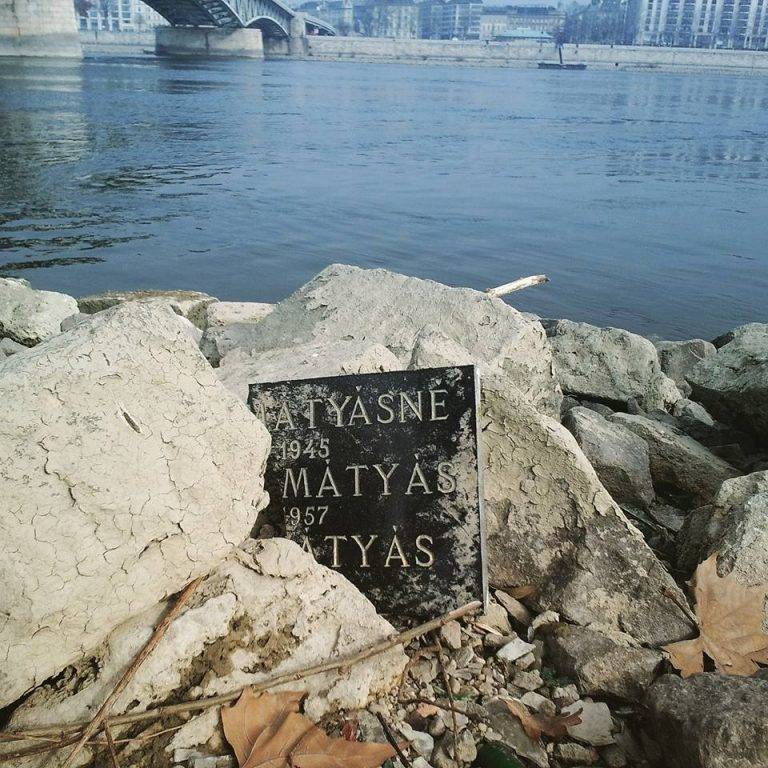 |
“The cycle of stone going through solidification, becoming fluid and then solidifying again.” Lying on my back on the riverstones, looking up into the branches and leaves of the willow trees, quivering in the wind. Letting the quivering and the angles of the branches against the sky resonate into my arms, legs, hands, feet, neck. Moving with them as I feel the light play and dance on us. To attempt to balance the rocks and fail, again and again. To give in and fall alongside the collapsing structures and ideas. To lie with the rocks, among them. To let them lie on me. To hug and rock them back. To feel the inherent waves in them, in me, in the water of the river next to me. To rock gently with all these kinds of waves. To place myself on a rock in the water, with my bosom full of rocks and sway with all of this. To roll with all that is undulating. Waves, rivers, bodies. What is this place to me? Tender beginnings. Material layers and stories. Waves in different shapes, paces and material manifestations. The confluence of bodies as water travels through human systems and on into the underground digestive tracts of the city, through sewers and canals to the wastewater treatment facility, that processes the water before it returns to the body of the river and travels on to other locations., carrying with it the imprint of the bodies of this city. The river in the city. The body in the city. The river in the body. The body in the river. | 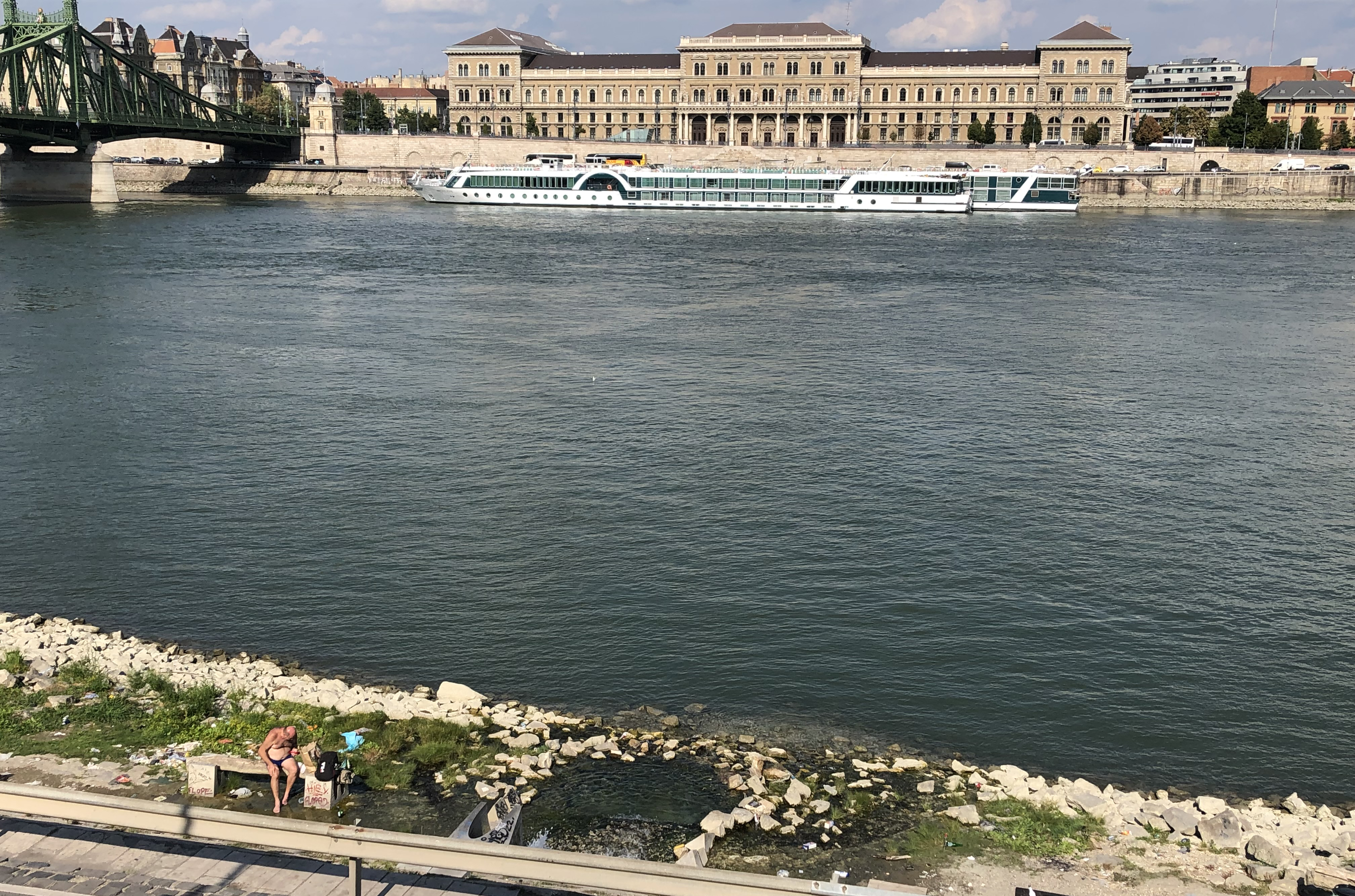 | |
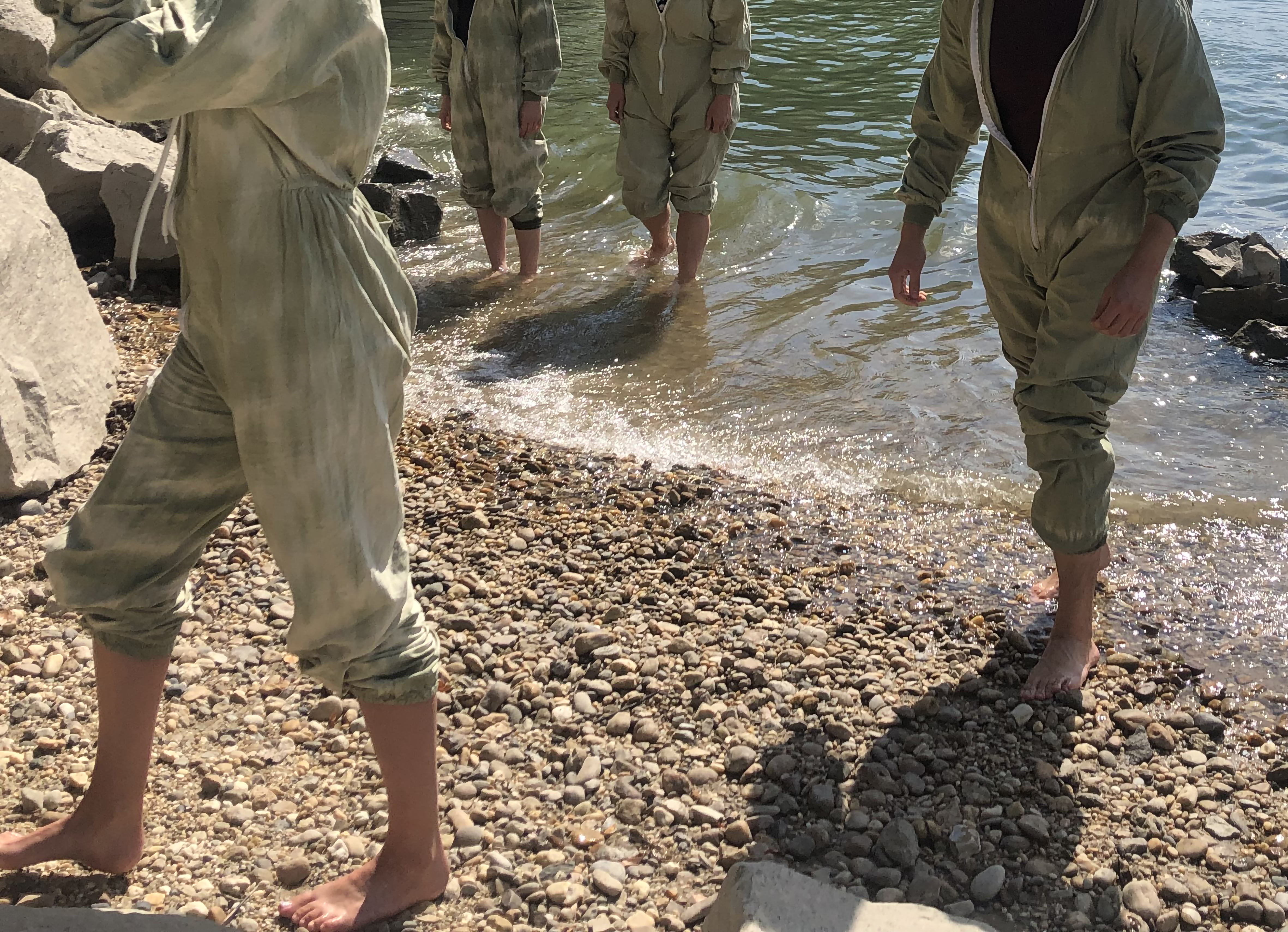 | 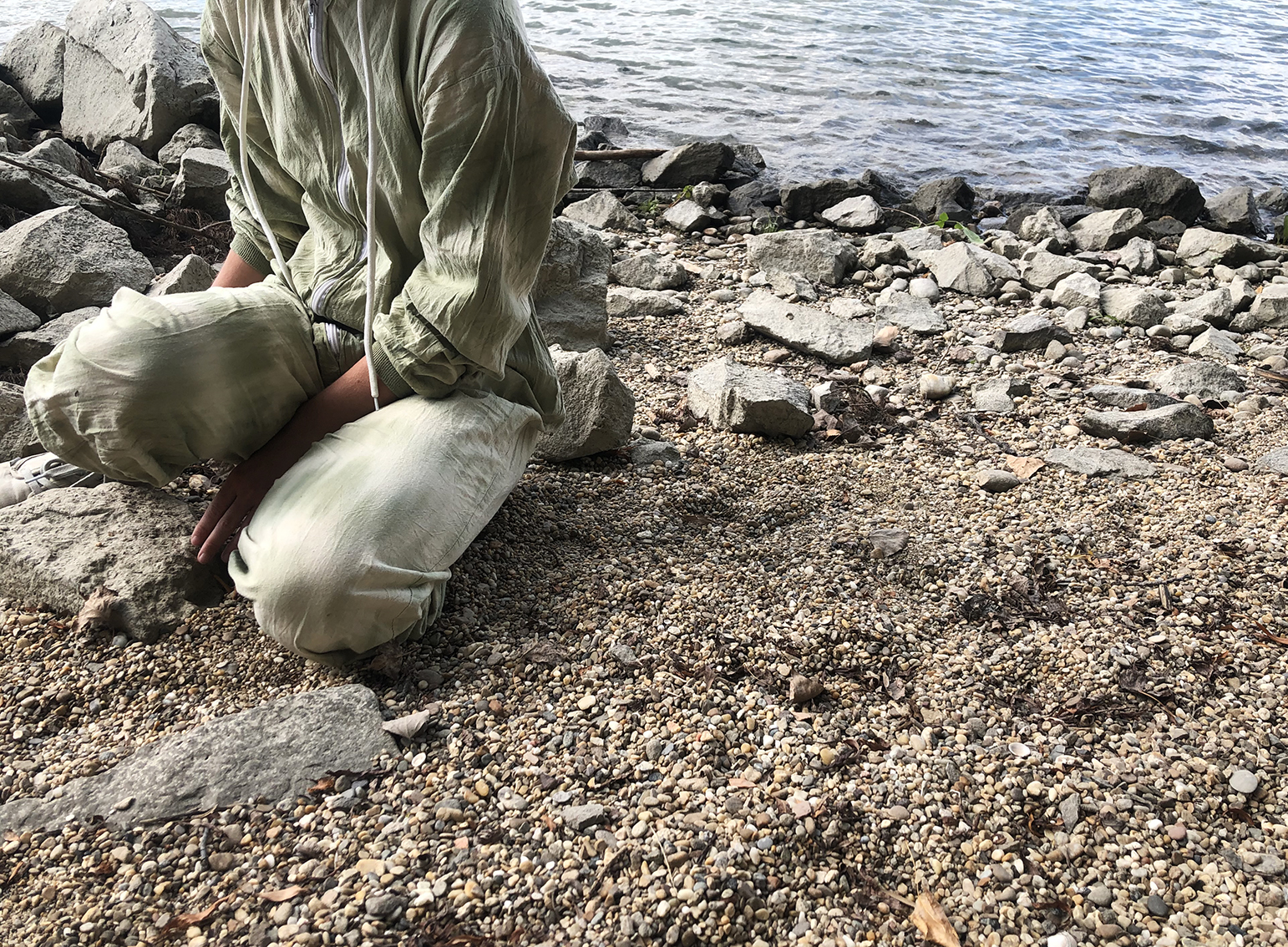 | |
“We set so much by our idea of the stability of stone. And when you find that stone itself is actually fluid and liquid, that really undermines my sense of what is here to stay and what isn’t.” (Andy Goldsworthy, Rivers and Tides) |
THE GEOLOGICAL EVENT OF ÈVRYResearch residency and workshop in Évry, Paris By invitation of Scéne Nationale de l’Esonne December 2022 All photos by Nana Francisca Schottländer | |
All mountains crumble All landscapes erode These urban mountains too Unless we hold them up- hence all the maintenance work. | 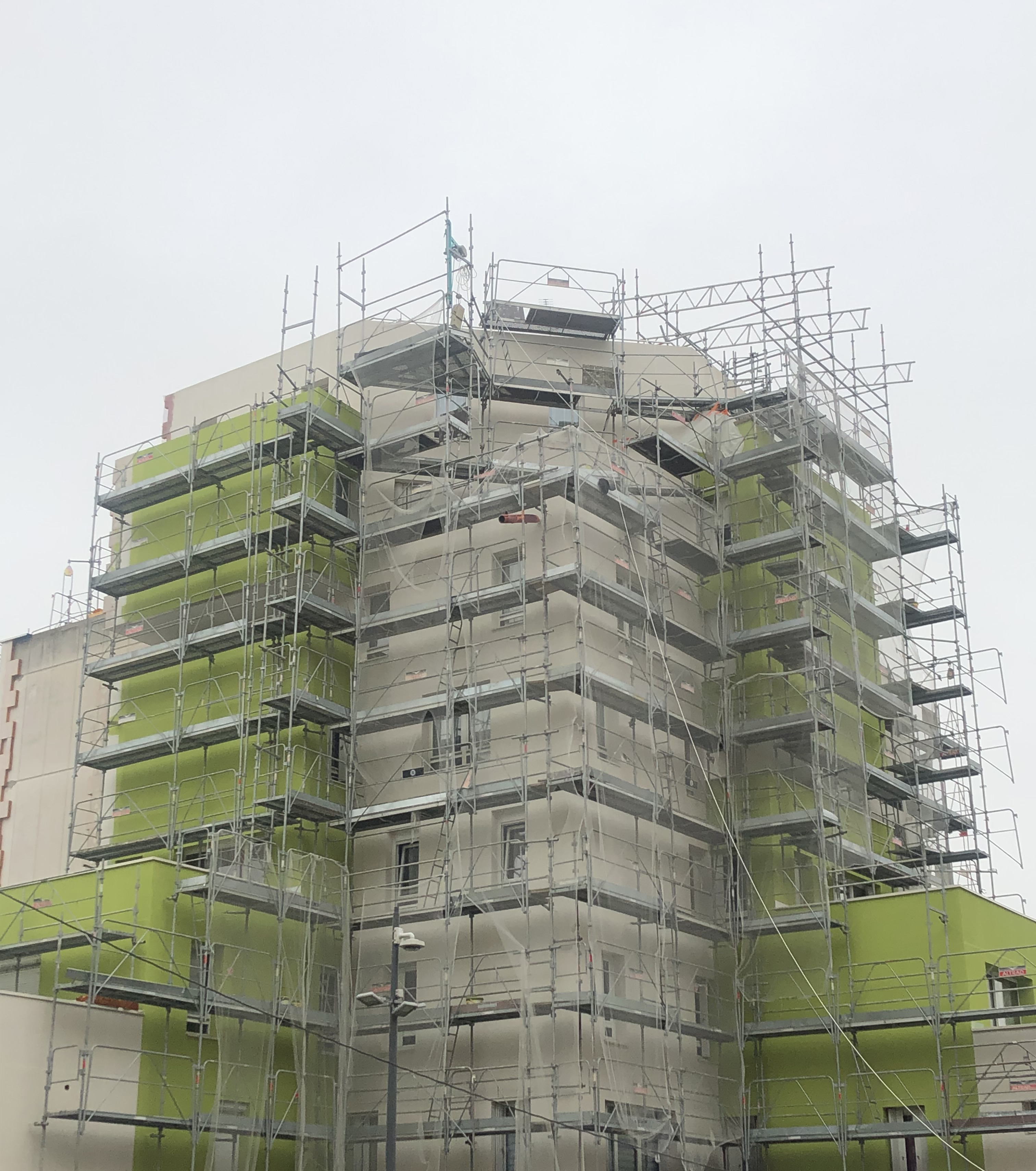 |
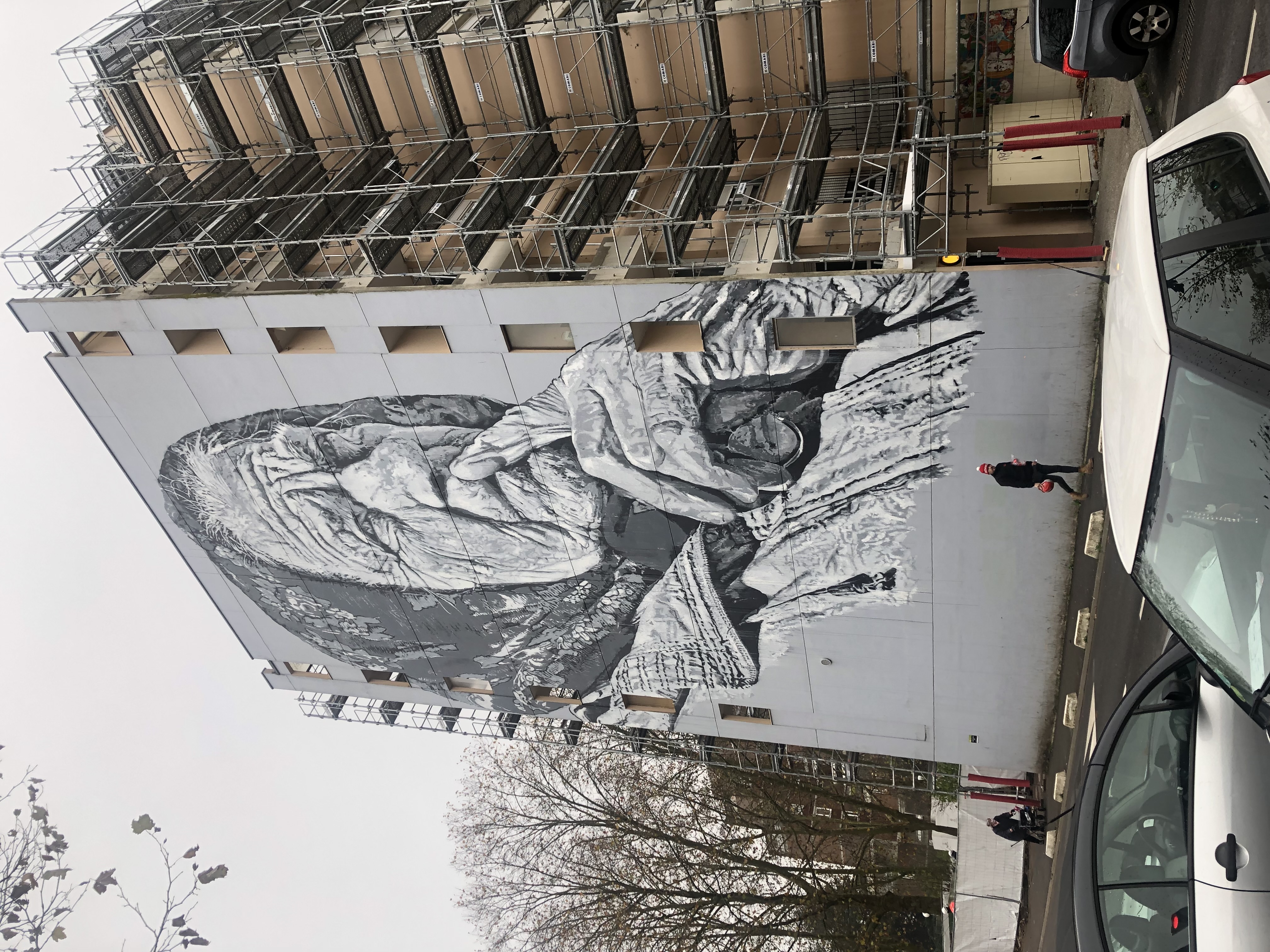 | |
What does it do to my body to be constantly lifted by constructions, hovering above the foundations of the landscape in this way? A kind of suspension. A displacement of grounding, a lack of connection to the soil. It removes me from the geological/geographical origins of this place. Lifting me high above it and into a world, which somehow denies og defies its connection to the material origins of this place.Francois tells us about the origins of the city: The planning, the visions. The transformation from rural landscape to suburbian bustle. I ask him, who was involved in the construction of the place, if he knows of anyone who can tell me, where the concrete that build this new landscape came from. Which mountains were ground to make the aggregate and cement? Where was it mixed? He doesn’t know, and he doesn’t know anyone who knows. | |
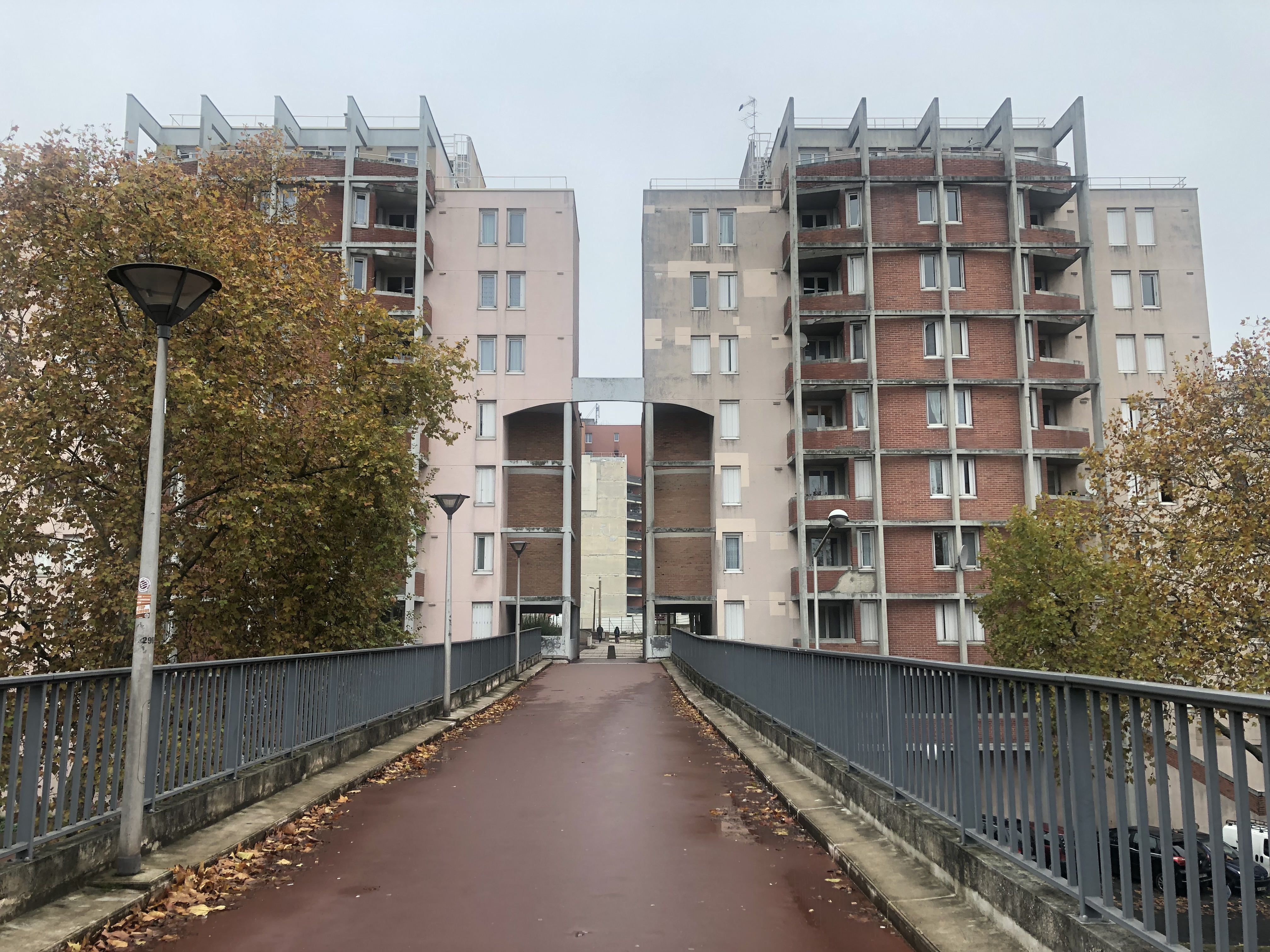 | 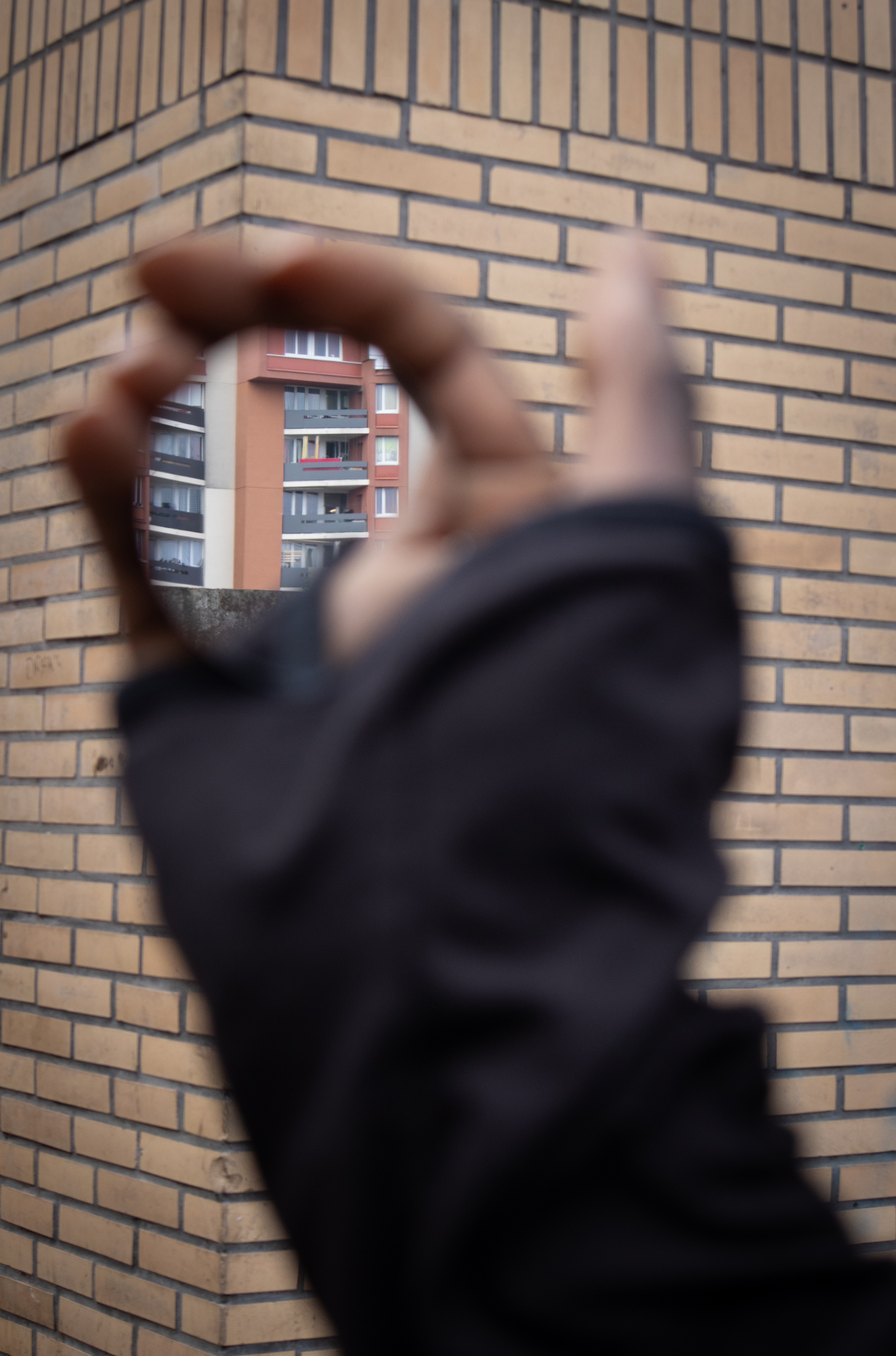 |
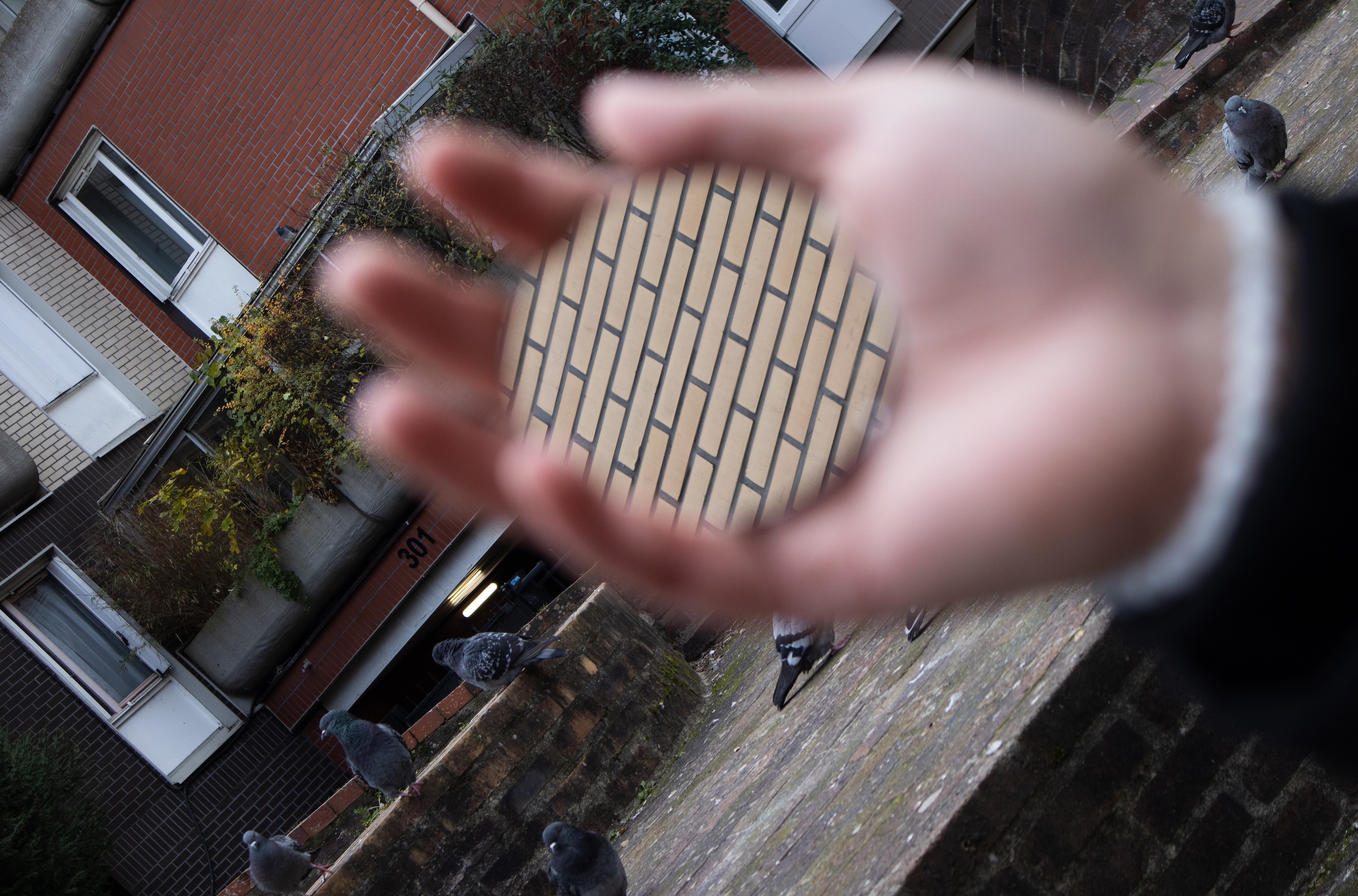 | The people who live here pass through. On average they only stay here 7 years before they move on. Most of them didn’t chose to be here, and move on, up the socio-economical ladder as soon as they can. They are not historically or materially connected to the place. |
It’s like the city is suffering from a sort of material amnesia. The material origins have been forgotten. And the intersecting journeys of human and material stories seem somehow uprooted from their original materials and topographies, not grounded in a shared sense of identity, of place, of belonging. Mental-material estrangement… lingering in a perpetuated suspension. A sense of history-less-ness. | 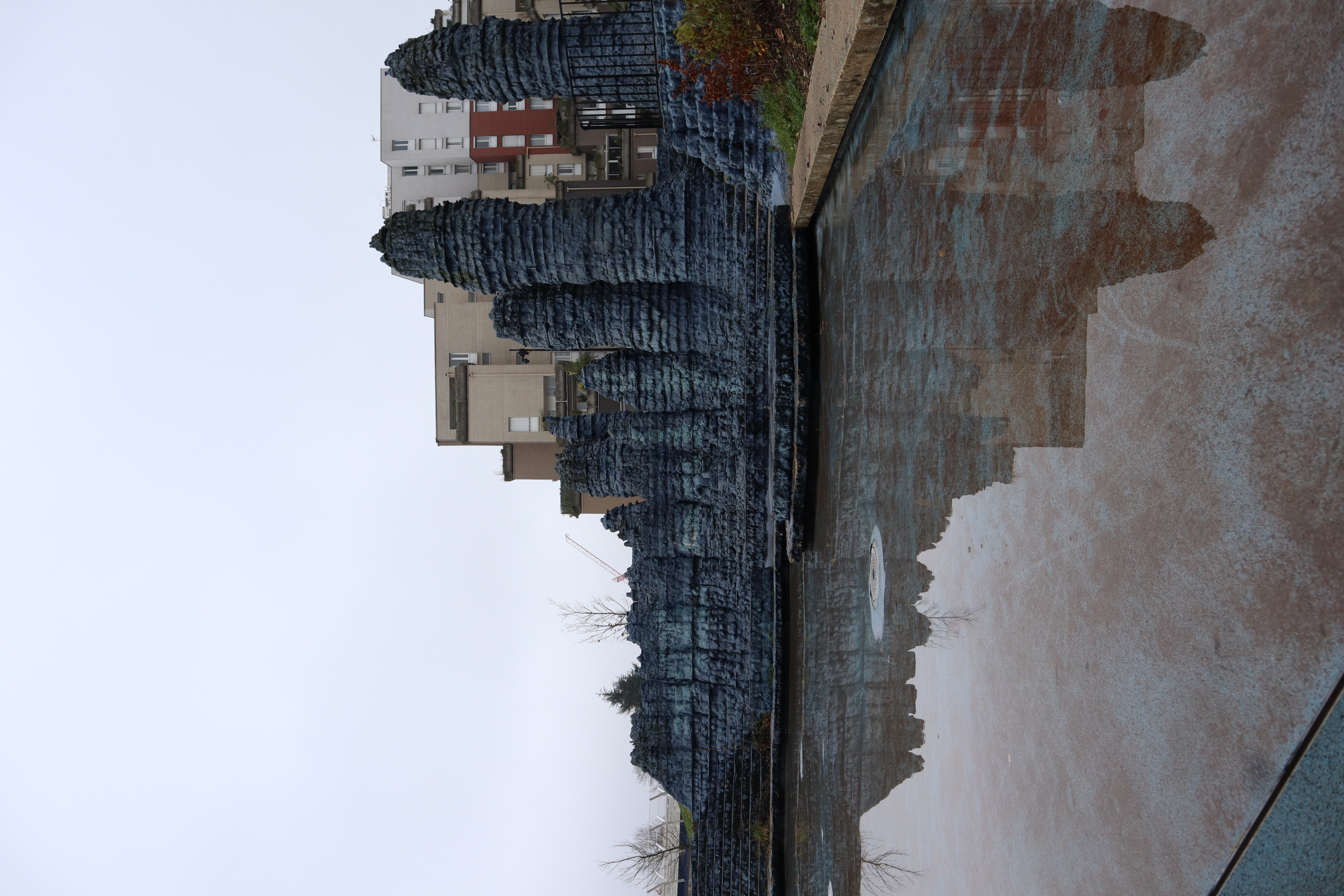 |
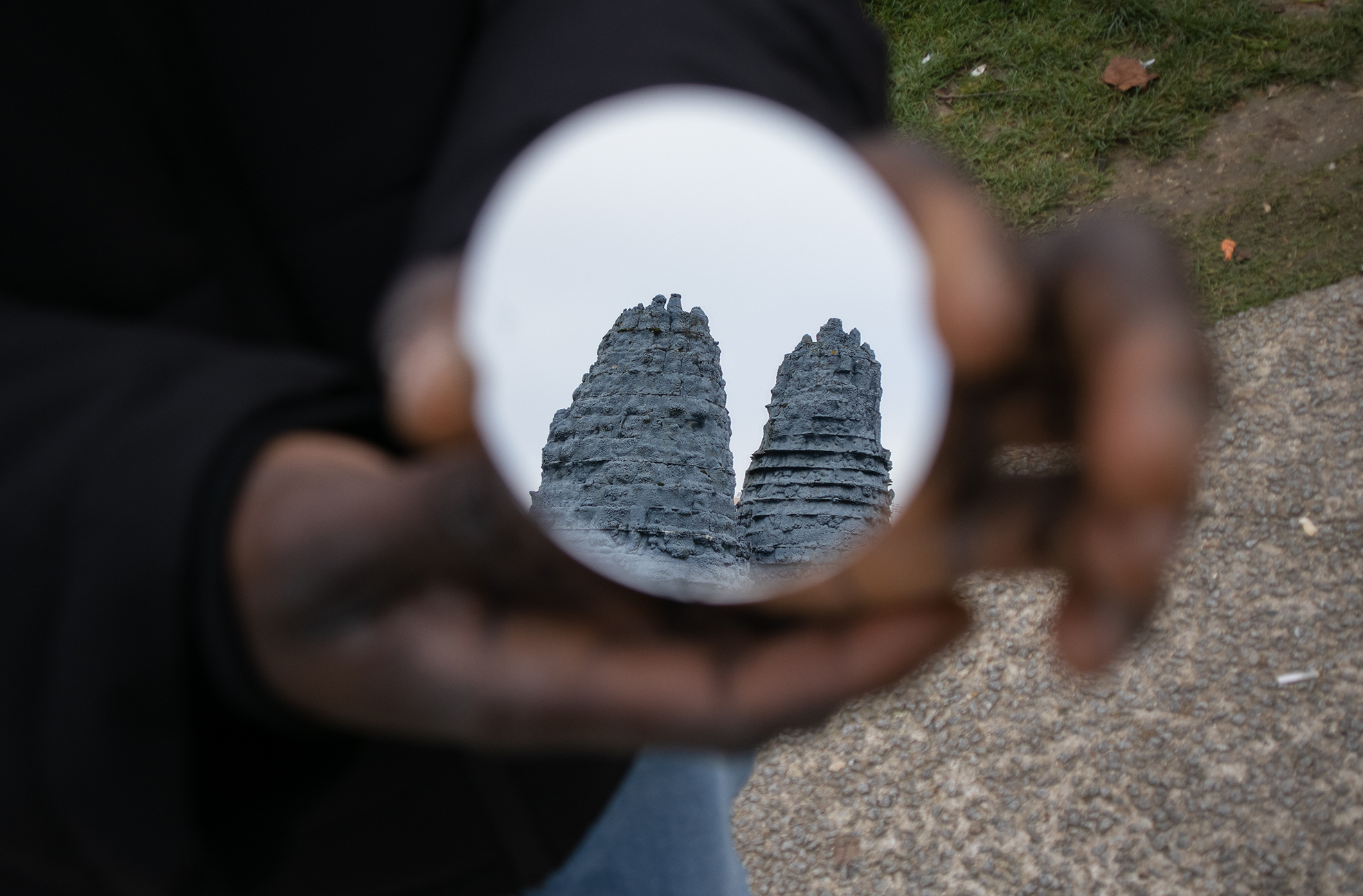 | |
How to trace the origins of matter and flesh? How to explore the genealogy of the city-body? How to establish connections between flesh and matter and root both here, now? Lying on my back, connecting to the layers of concrete beneath me. Sinking in. Thinking about the different times of the different bodies here: Cloud time, human time, stone/concrete time, moss time. Becoming a ball of moss to rest with the place from there. Following the green path in the cracked asphalt pavement to arrive to the tower of bricks. Getting intimate with the bricks, touching and stroking their surfaces, noticing details in their textures and colors. Listening to their story of origin; feeling the slow grinding journey of the ice, the resting into sediments, the power of the burn. Bonding and resonating with the patience of this material. Opening my eyes to witness the world and the people passing from its perspective. With mildness. | 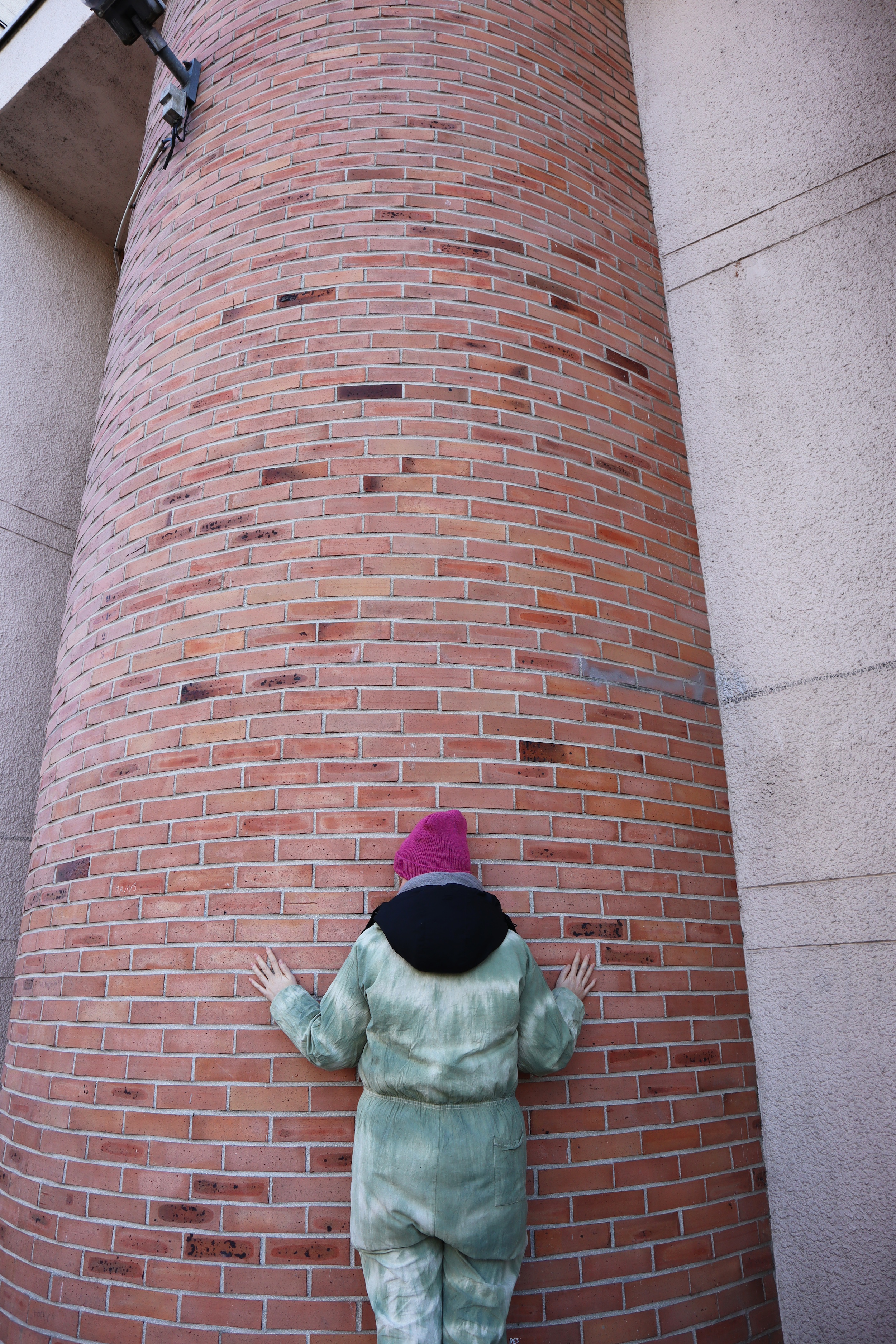 |
Looking at shards of broken glass, like boulders in the miniature moss-scape that is slowly spreading across a forgotten corner of concrete. The glass is trash, matter out of place according to the expectations of this particular material assembly. But in reality the glass is closely related to the stones and sand in the concrete. All of this is matter out of place. Including me. And now all is here. In this place. What microbial entities inhabit this place without questioning its material origins? From the microbial perspective this landscape just is. They don’t question who made it or how. It’s just another material accumulation that becomes a habitat, an origin. Through resting together in time, we find our places with each other here. Come into place together. | |
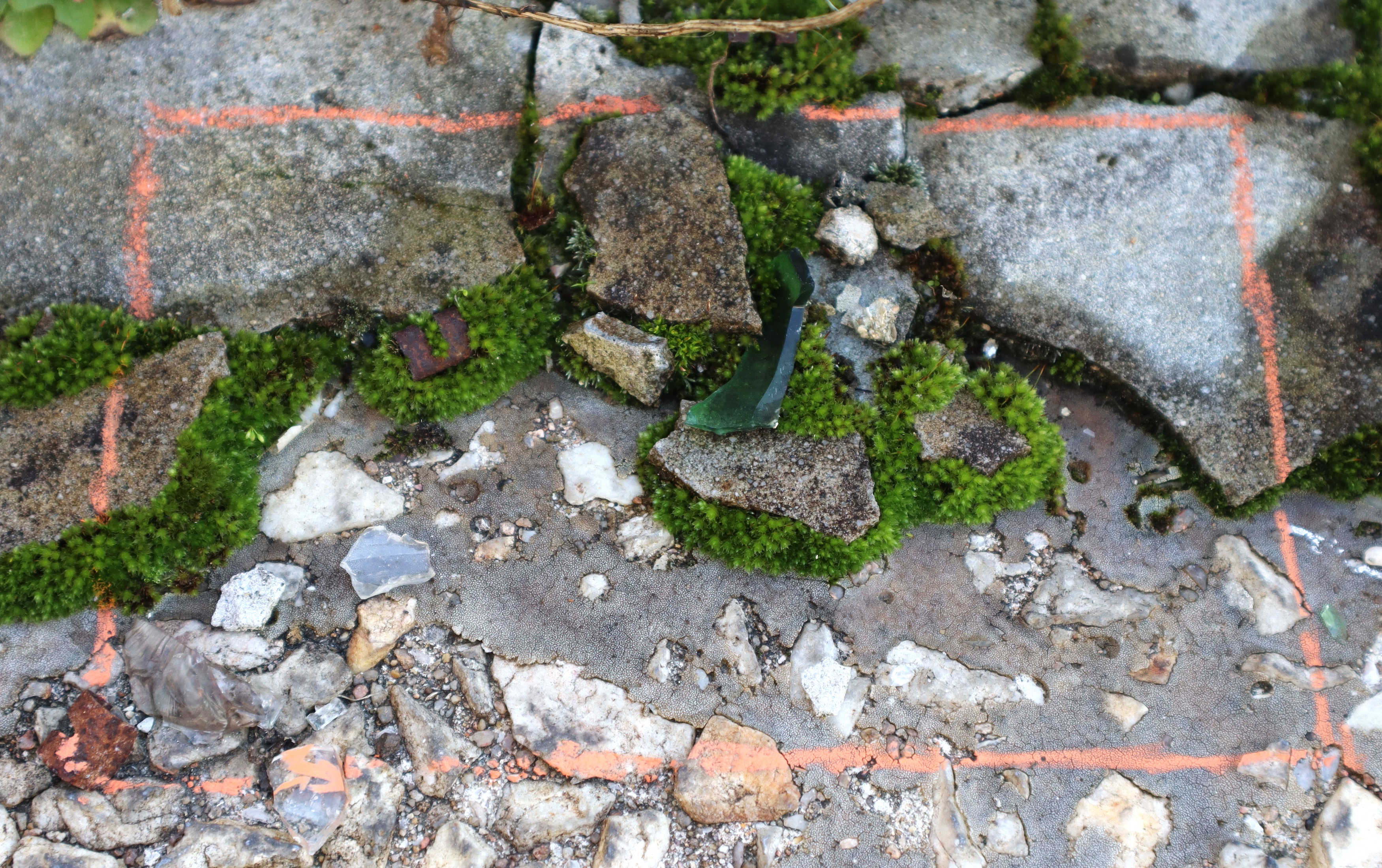 | |
THE DRIED-OUT RIVER AND WATERFALL OF LES AYGALADESMarseille, France Research residency and workshop by invitation of Lieux Publics September 2023 Photos: Marine Gastineau & Nana Francisca Schottländer | ||
| Quotes from members of the volunteer group Les Gamarres, working with the river: “Our river is really crappy - why do we pay so much attention to it? ”The river unites us across very different territories by what travels with the water as it journeys from one place to another. Linking future luxury apartments in Euro-med with chemicals and trash from industries and forgotten places further upstream. Linking past and present. The river is an entire body. Everything falls into the river, like a long, digestive tract, that gradually disintegrates and re-integrates matter along the way. An anthropology of trash… How to read it in new ways? How to give value to it? How to establish a relationship to an orphaned river?” “Why do I care about this drop of water? Because it connects me to all the rest of the world.” “The river is a mirror. It shows me myself.” | 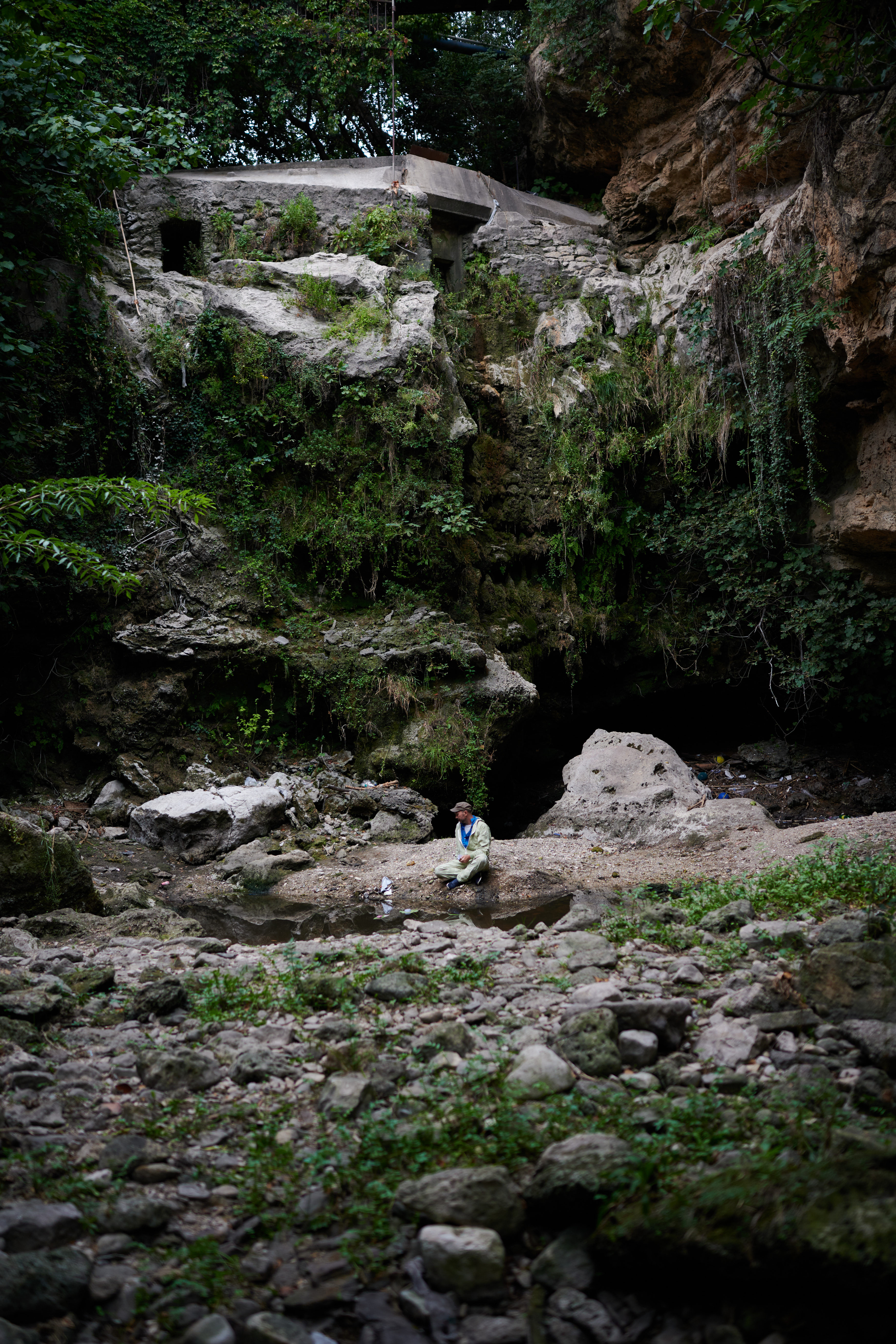 | |
A river-corpse. The play of light and shadow through the trees falls on the dried-out riverbed and its assemblages of rocks, concrete, building materials, rusty iron and plastic trash. Emulating the caress and movement of water here, in the coagulated stillness. Mosquitos and frogs enjoy themselves and spawn prolifically in the stagnant, trash-infested leftovers of waters that smell corporeal, like a rotting carcass. I try to sense, to listen to the place; its sounds, material stories, ambiances and dynamics. The wind traverses through the landscape in the crack of the of the riverbed and I try to distract myself from the thought of tiger mosquitos and exotic diseases. I have already been stung twice… But the tale of the tiger mosquitos is also a part of this places. More than mine. We’ve got to figure it out together. What can you do here? What can I do, besides mourning the state of this place and trying to tidy it up? I explore with my body and my camera. Allow myself to be absorbed by the details, by all the microscopic tales here. Searching for memories of water and traces of life. I ask the purple jacket, that lies all tangled up in roots and stuffed with river-matter: Where did you come from? It says it comes from the sea. But I don’t understand that. I ask, who are you, and you say: I am one who can be filled. I ask, where do you go from here? You say, ‘Out, into the world’. I think you forgot that you’re a jacket… You have been swallowed by the river. Have become something else, something of the river. | ||
| Plastic shaped by the river, in the shape of the river. When the water disappears it keeps its shape, intimately folded around the rock, waiting for water, movement, life, to reanimate it. I could move it, but I chose to let it stay as it is. Partaking in the delicately curated assemblages. I become transparent and rest while waiting in coagulated swirls for the water, alongside all the meticulously arranged plastic matter, dwelling with the ongoing shaping practices of the river. | |
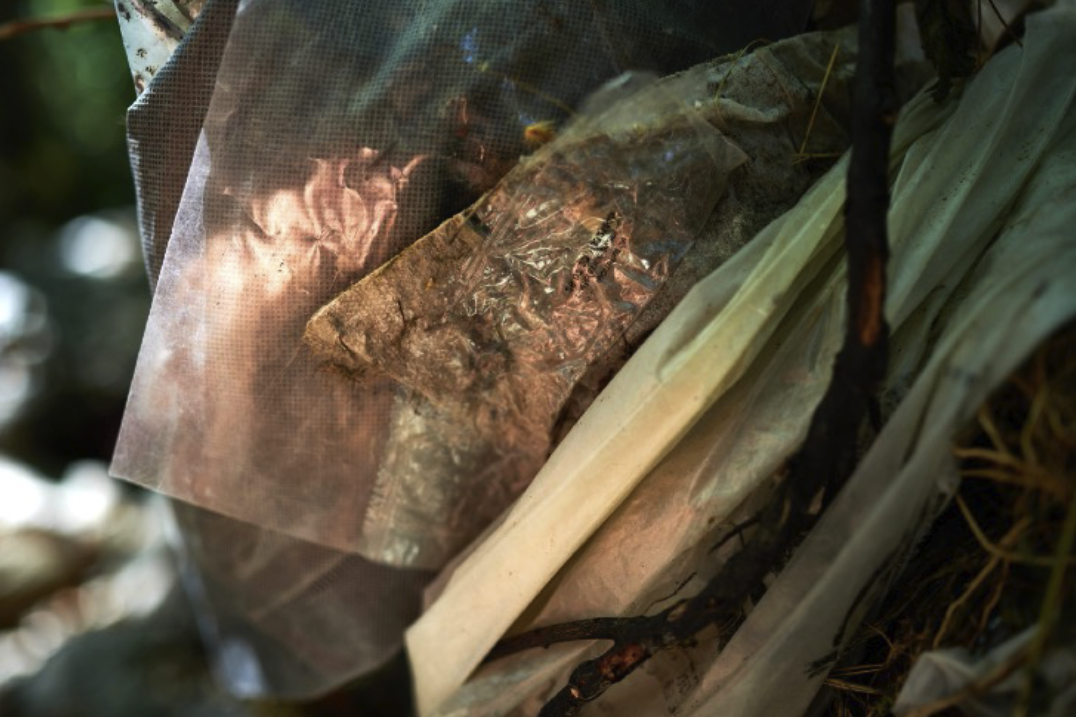 | The river is: Assemblage | |
I am like Narcissus, getting lost in my own reflections; the imprints of human presence here.  | 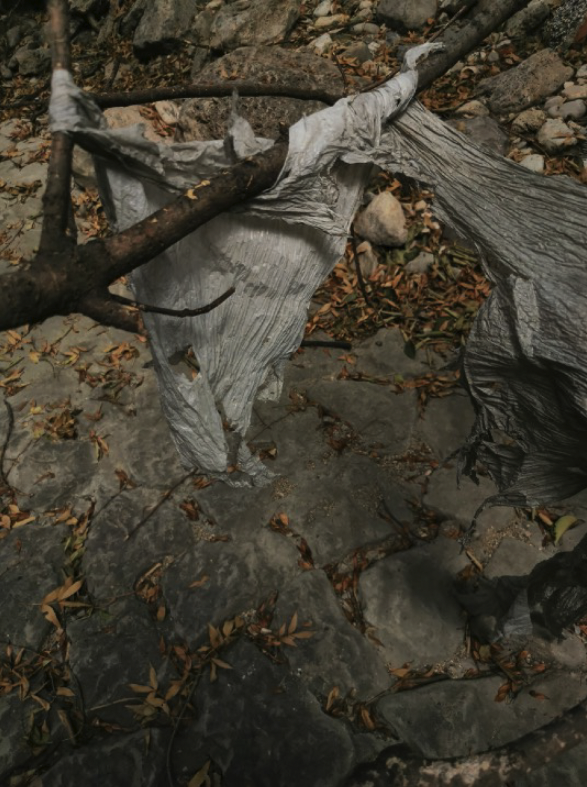 |
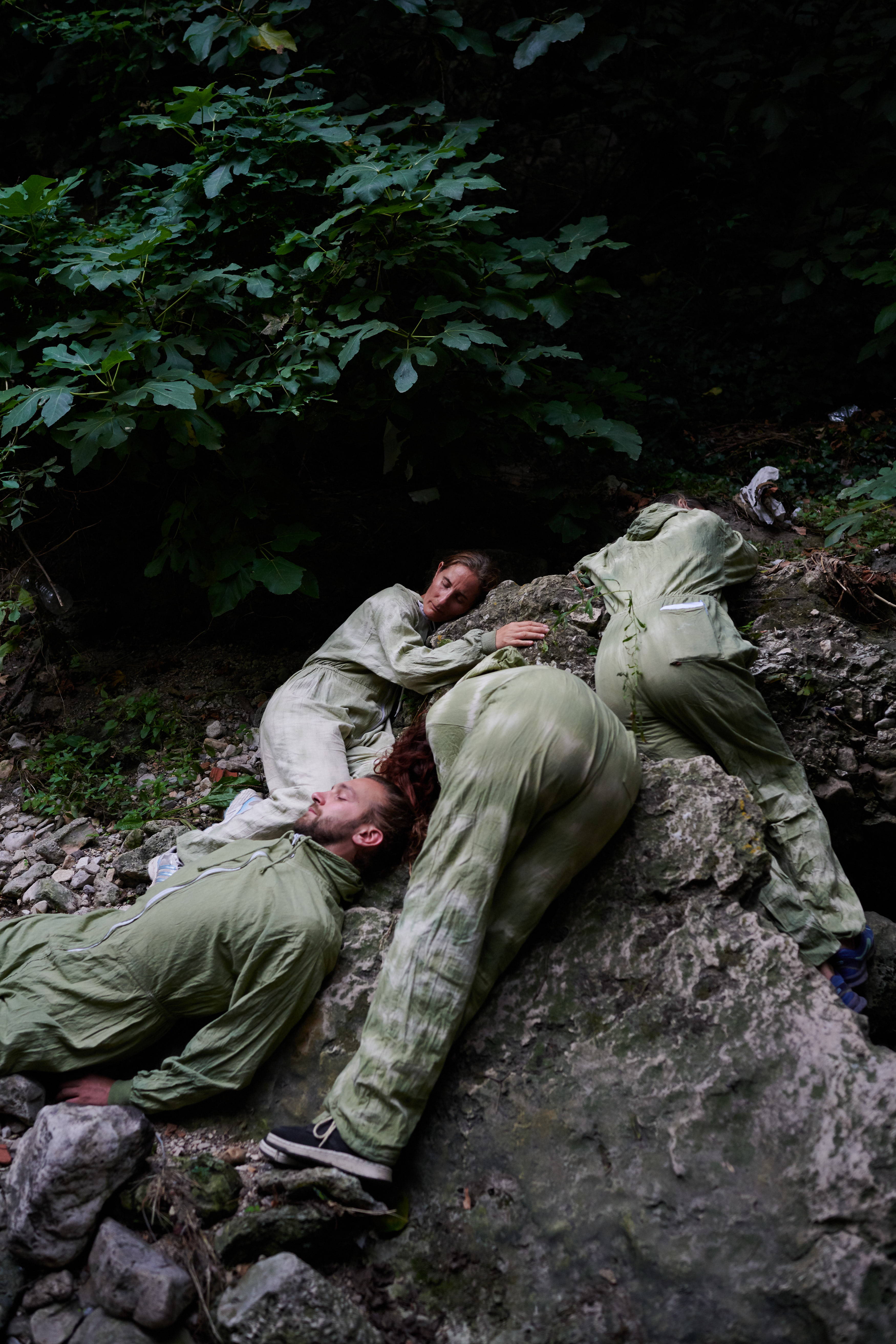 | |
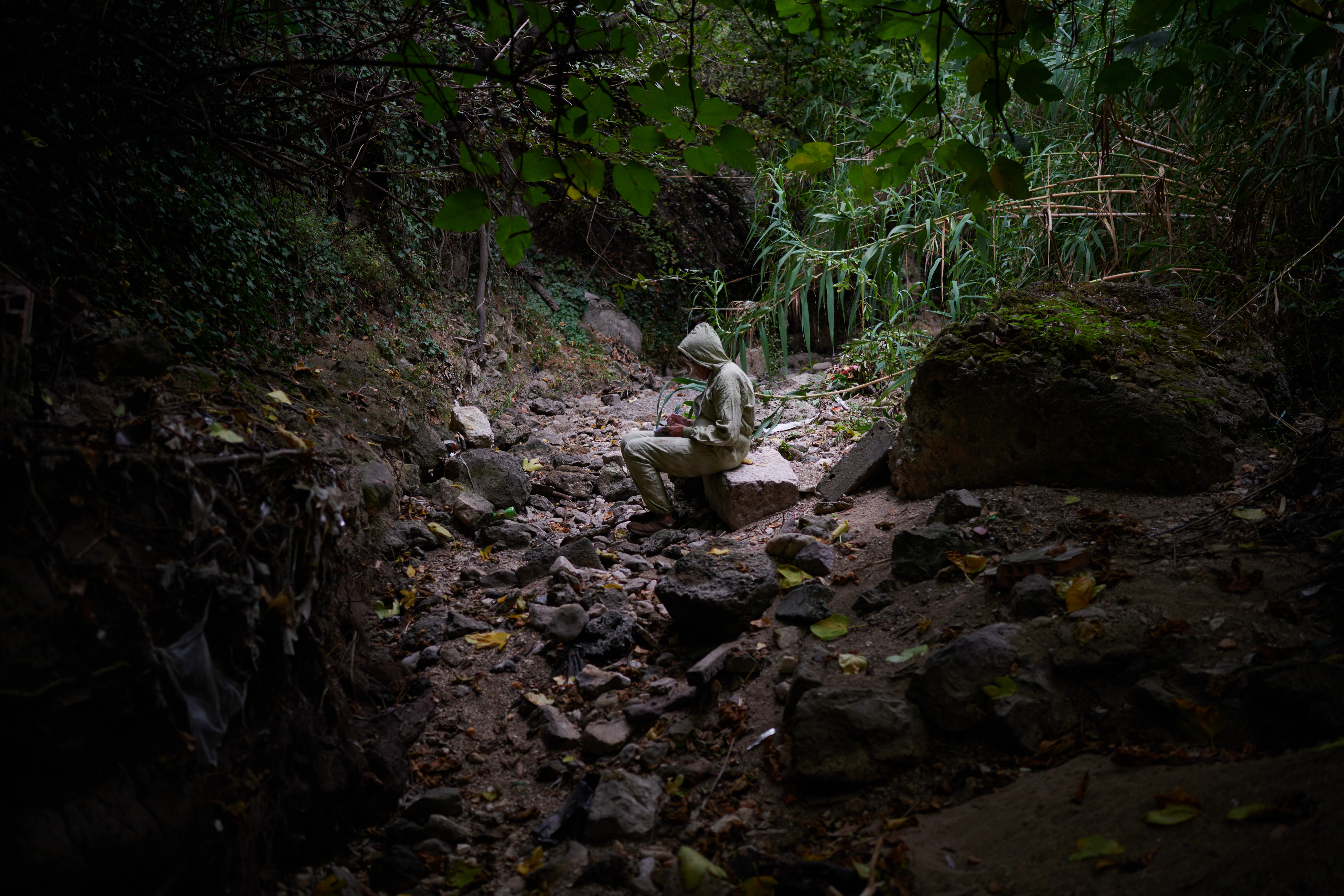 |
